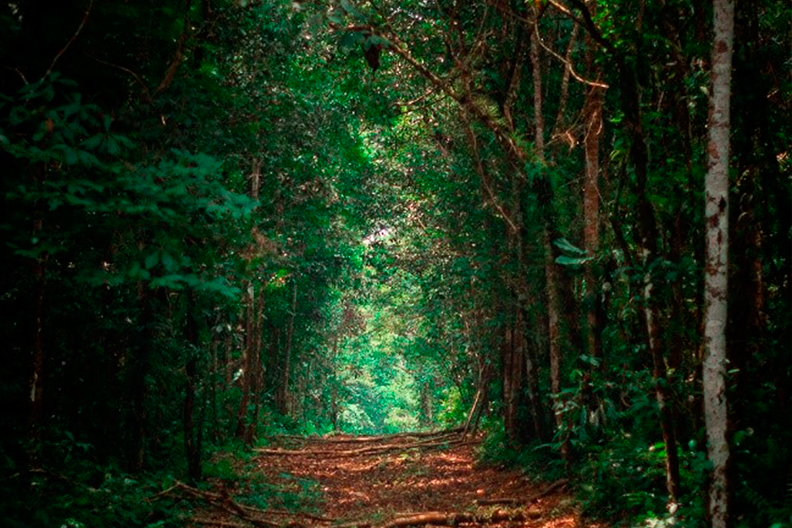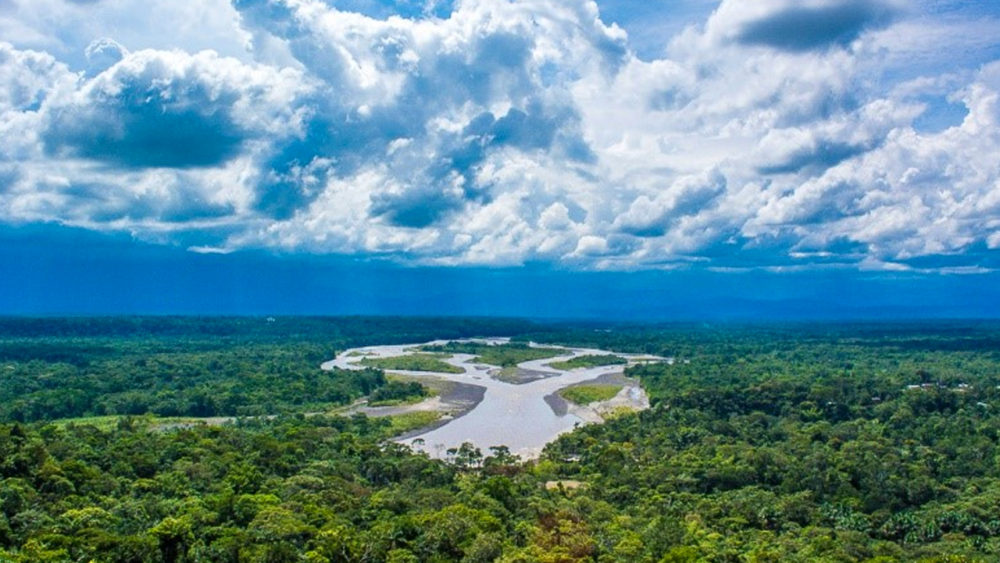Most terrestrial biodiversity is found in the world’s forests, from boreal forests in the far north to tropical rainforests. Together, they contain more than 60,000 different tree species and provide habitats for 80% of amphibian species, 75% of bird species and 68% of mammalian species. About 60% of all vHCSular plants (those with leaves, stems and roots, formed by vessels through which latex or sap circulates) are found in tropical forests.
Forests cover 31% of the world’s land surface, but they are not evenly distributed. Almost half of the forest area is still relatively intact and more than a third consists of primary forests.
Ecuador has about 249,000 km², barely equivalent to 0.02% of the planet’s land surface, excluding sea surface, and is the smallest of the 17 megadiverse countries in the world. However, tropical humid forests constitute an important part of the Ecuadorian Coastal and Amazon region.
Approximately 17,934 vHCSular plants have been documented in the country – the main components of the world’s terrestrial vegetation – (1,422 pteridophytes, such as ferns; 18 gymnosperms, plants with seeds but not flowers, such as pines, Podocarpus and other conifers, and 16,308 angiosperms, which are all flowering plants).
A study carried out by taxonomists and ecologists found that there are 2,296 registered tree species in the Ecuadorian Amazon. The evergreen lowland forest of the Amazon, which is a wooded stratum present in the 6 Amazonian provinces of Ecuador, is found below 700 meters and above 400 meters; it is highly heterogeneous with trees reaching 30 meters in height and in some cases, more than 40 meters, and precipitation exceeds 2,000 mm.
Moreover, due to its geographical position, sunlight strikes the earth perpendicularly most of the time, leading to a high rate of radiation that increases temperatures to an average of 16 to 26 °C, and up to 35 °C in the warmer seasons. This heat causes water from rain and nearby water sources to constantly evaporate, which creates a highly humid environment. All these characteristics lead to the Amazon forest being the ecosystem with the greatest biodiversity on earth.
Forest ecosystems play an important role in mitigating climate change, as they act as sinks that absorb carbon dioxide (CO2) from the atmosphere and store carbon in biomass and soil. However, deforestation is the second most important cause of climate change after burning fossil fuels, amounting to almost 20% of all greenhouse gas emissions, which is more than the entire transportation sector worldwide.
The Comprehensive Amazon Program for Forest Conservation and Sustainable Production (PROAmazonía), implemented by the United Nations Development Program (UNDP) and the United Nations Food and Agriculture Organization (FAO), carries out activities that help reduce pressure on forests and promote sustainable management of natural resources.
PROAmazonía works to strengthen forest governance through conservation, restoration, sustainable forest management, traceability and forest certification. With the technical support of FAO, it continues the activities of the second National Forest Evaluation (II NFE) with the objective of providing reliable information on the state of the country’s forest resources for decision-making regarding their organization, management and administration.
This process will provide inputs for an assessment and proper planning of the state of forests, their biodiversity and their contributions to strengthening the livelihoods of the population, and will allow the country to comply with the measurement, reporting, and verification (MRV) requirements of the REDD+ Action Plan and the international commitments undertaken.
The preservation of tropical forests helps regulate climate, conserve the abundant biodiversity found in these areas and generate livelihoods for communities that inhabit these ecosystems.
The International Day for the Conservation of Tropical Forests was established in 1999 by the United Nations Environment Program (UNEP), the World Wide Fund for Nature (WWF) and the United Nations Educational, Scientific and Cultural Organization (UNESCO) to promote sustainable and harmonious actions with the environment through proper management of forests.
Highlights
- Forests cover 31% of the world’s land area. About half of the forest area is relatively intact and more than a third is primary forest.
- Human health and well-being are closely related to forests. More than 28,000 species of plants have been registered for medicinal use and many are found in forest ecosystems.
- It is estimated that 75% of the world’s major food crops, which represent 35% of global food production, benefit from zoophilic pollination for the production of fruits, vegetables or seeds.
- Worldwide, around 1 billion people depend to some extent on wild-sourced food.
- The existence of approximately 17,934 vHCSular plants has been documented in Ecuador.
- In the Ecuadorian Amazon there are 2,296 registered tree species.
Bibliography
- FAO. (2013). Tackling Climate Change through Livestock. A global assessment of emissions and mitigation opportunities. Rome: FAO.
- FAO. (2018). State of the World’s Forests.
- FAO. (2020). State of the World’s Forests.
- Guevara Andino, Juan et al. (2019). Trees of Amazonian Ecuador: a taxonomically verified species list with data on abundance and distribution.
- MAE-FAO. (2015). Metodología para la generación de modelos alométricos para la estimación de biomasa de árboles y bosques.
- Neill, David. (2015). ¿Cuántas especies nativas de plantas vHCSulares hay en Ecuador?
-

Photography by José Armijos. Laguna de Ayauch, Canton Tiwintza, Morona Santiago province -

Photography by José Armijos. Kiritim Community, Taisha Canton, Morona Santiago province -

Photography by José Armijos. Tiputini Biodiversity Station, Orellana province.
Author: Jorge Armijos
Reference Level Technical Specialist of Forest Emissions of FAO – PROAMAZONÍA
 Español
Español English
English
